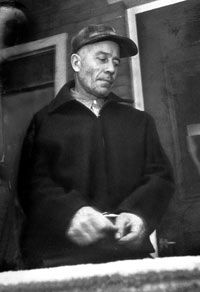Serial Killer Profiling
Determining the signature and the MO are both aspects of profiling. The FBI's Behavioral Sciences Unit developed the process of profiling in the 1970s, and Ted Bundy was one of the first serial killers to be profiled. Studies by psychologists and psychiatrists and information gleaned from past serial murders go into the creation of the profile, along with crime-scene information and witness statements. For example, if the victim is Caucasian, the killer is probably Caucasian. If the crime scene shows evidence of careful planning, the killer is likely to be intelligent and older. If the victim was mutilated in a very disorganized way, her killer is probably schizophrenic, and schizophrenics are more likely to be very thin and unkempt [source: Vronsky].
Profiles are not 100 percent accurate, but they're usually found to be very close. According to Robert Keppell, the detective who took Bundy's confession, the profile assembled for Bundy's crimes was perfect, "even to the point where they predicted he'd have a step-brother and that's what he had" [source: Bellamy].
Advertisement
Once the profile is completed, investigators can look at the existing list of suspects and determine which are most likely to have committed the crime and determine how best to capture him. Some organized serial killers, such as Dennis Rader (the BTK Killer), feel the need to taunt the police, which sometimes leads to their arrest. Rader sent police a floppy disk containing metadata that was traced to his church. Many serial killers, even those who are incredibly organized and methodical, slip up in some way that leads to their arrest. In the case of Jeffrey Dahmer, a potential victim escaped and led police to Dahmer's apartment. Some of John Wayne Gacy's victims had worked for his construction business.
But not all serial killers are caught. Some are arrested or picked up for other crimes, and evidence leads investigators to their murders. Ted Bundy was caught at a routine traffic stop, while David Berkowitz, the "Son of Sam," was initially picked up for loitering and was thought to be a witness to the crimes instead of the killer.
Once convicted, most serial killers either spend their lives in prison or are executed if the death penalty exists in their state. Ed Gein is one exception. At first found incompetent to stand trial, Gein was sent to a mental institution. Later his psychiatrist determined that he was competent, and a judge found him not guilty by reason of insanity. Gein died in 1984 of heart failure.
Most researchers agree that there is no way to "cure" a serial killer. Some serial killers who spent time in mental institutions after committing their crimes or received psychiatric treatment were deemed "cured" and released, but they went on to kill again. Others did not improve after a number of treatment attempts. Peter Woodcock spent 35 years in a criminal psychiatric hospital in Ontario, Canada, after murdering three children. While out on a day pass, he and his security guard escort -- who was also a previously imprisoned killer -- killed another patient.
Until we know more about how to stop serial killers before they start to kill or refine ways of capturing them before they continue the cycle of murder, they will continue to be as much a part of reality as murder itself.
For lots more information about serial killers and related topics, check out the links below.
Related Articles
- How Crime Scene Investigation Works
- How Autopsies Work
- How Crime-scene Clean-up Works
- How DNA Evidence Works
- How Blood Works
- How Luminol Works
- How Profiling Works
- How Your Brain Works
- How Prisons Work
- Do criminal psychopaths enjoy other people's fear?
More Great Links
Sources
- Bellamy, Patrick. "On the Trail of Ted Bundy." The Crime Library. http://www.crimelibrary.com/criminal_mind/profiling/keppel1/1.html
- Douglas, John. "Violent Predators Hide Behind the Insanity Defense But They Know the Difference Between Right and Wrong." John Douglas: Mind Hunter. http://www.johndouglasmindhunter.com/articles/030201.php
- Douglas, John. "Linking Cases Together: Following a Killer's Signature." John Douglas: Mind Hunter. http://www.johndouglasmindhunter.com/articles/030210.php
- "Green River Killer avoids death in plea deal." CNN.com, November 5, 2003. http://www.cnn.com/2003/LAW/11/05/green.river.killings/index.html?iref=newssearch
- Hickey, Eric W. "Serial Murderers and Their Victims." Wadsworth/Thomson Learning, 2002.
- Holmes, Ronald M. and Stephen T. "Profiling Violent Crimes." Sage Publications, 2002.
- Karr-Morse, Robin and Meredeith S. Wiley. "Ghosts From the Nursery: Tracing the Roots of Violence." Atlantic Monthly Press, 1997.
- "Murder - Crime in the United States 2004." FBI. http://www.fbi.gov/ucr/cius_04/offenses_reported/violent_crime/murder.html
- O'Connor, Tom. "Serial Killer Typology." MegaLinks in Criminal Justice. January 23, 2006. http://faculty.ncwc.edu/TOConnor/428/428lect06.htm
- O'Neil, Dennis. "Sex Chromosome Abnormalities." Behavioral Sciences Department, Palomar College, January 1, 2007. http://anthro.palomar.edu/abnormal/abnormal_5.htm
- Ressler, Robert K. and Tom Schactman. "Whoever Fights Monsters." St. Martin's Press, 1993.
- Rhodes, Richard. "Why They Kill." Knopf, 1999
- Scott, Shirley Lynn. "What Makes Serial Killers Tick?" The Crime Library. http://www.crimelibrary.com/serial_killers/notorious/tick/victims_1.html
- U.S. Code. Title 18. Part 1, Chapter 1, Section 17 - Insanity Defense. http://www.law.cornell.edu/uscode/html/uscode18/usc_sec_18_00000017----000-.html
- U.S. Code. Title 28. Part II, Chapter 33, Section 540B - Investigation of Serial Killings. http://www.law.cornell.edu/uscode/html/uscode28/usc_sec_28_00000540---B000-.html
- ViCAP: FBI Investigative Programs Critical Incident Response Group. http://www.fbi.gov/hq/isd/cirg/ncavc.htm#vicap
- Vronsky, Peter. "Serial Killers: The Method and Madness of Monsters." Berkley Books, 2004.
